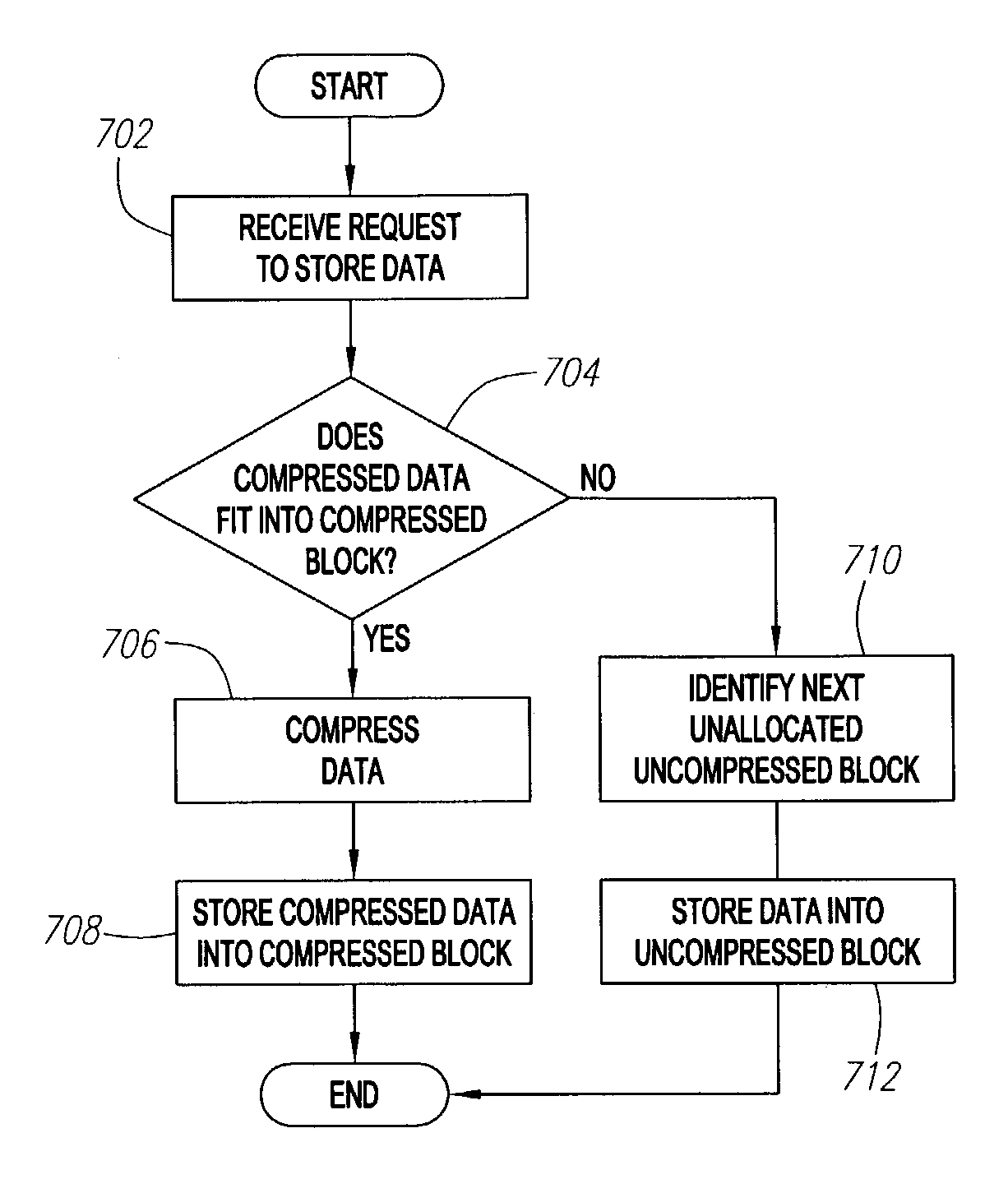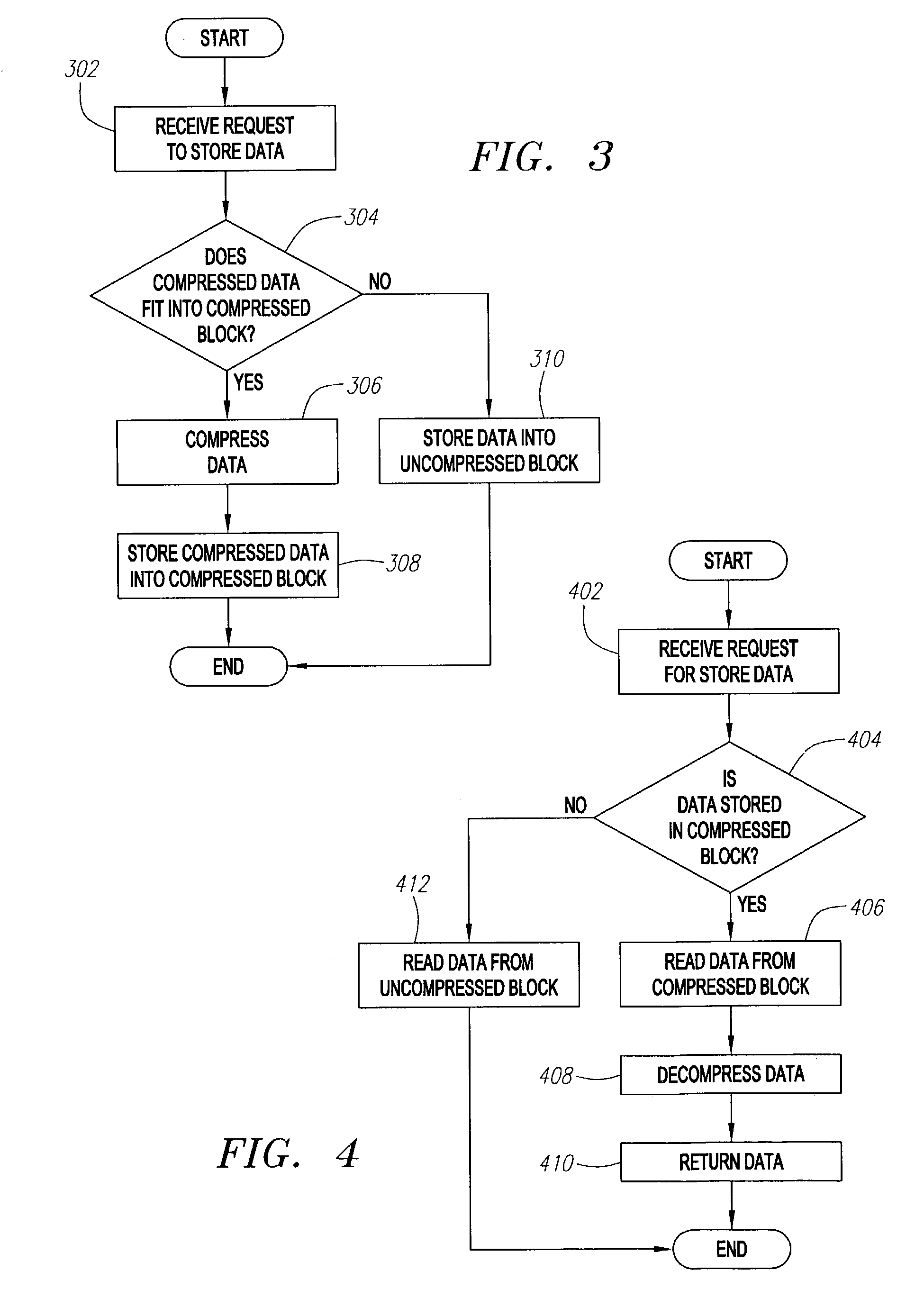Method and mechanism for on-line data compression and in-place updates
- Summary
- Abstract
- Description
- Claims
- Application Information
AI Technical Summary
Benefits of technology
Problems solved by technology
Method used
Image
Examples
Embodiment Construction
[0017]The present invention provides a method and mechanism for compressing and decompressing data in a computing system. Examples of benefits of utilizing the present compression approach include (a) reducing storage / disk space and (b) reducing the runtime I / O demands on the disk subsystem. For purposes of illustration only, the following description will be made with respect to the compression / decompression of data files in database files using blocks. It is noted, however, that the present invention is applicable to managing other types and granularities of data in a computing system, and thus is not to be limited to compression of just database data or granularities of just files / blocks.
[0018]FIG. 1 is an overview diagram showing an embodiment of the present invention in which a file 2 comprises data portions 2a–f. It is noted that data within a file is not always uniformly compressed. The achievable compression ratio for pieces of data within a file depends upon both the specif...
PUM
 Login to View More
Login to View More Abstract
Description
Claims
Application Information
 Login to View More
Login to View More - R&D
- Intellectual Property
- Life Sciences
- Materials
- Tech Scout
- Unparalleled Data Quality
- Higher Quality Content
- 60% Fewer Hallucinations
Browse by: Latest US Patents, China's latest patents, Technical Efficacy Thesaurus, Application Domain, Technology Topic, Popular Technical Reports.
© 2025 PatSnap. All rights reserved.Legal|Privacy policy|Modern Slavery Act Transparency Statement|Sitemap|About US| Contact US: help@patsnap.com



